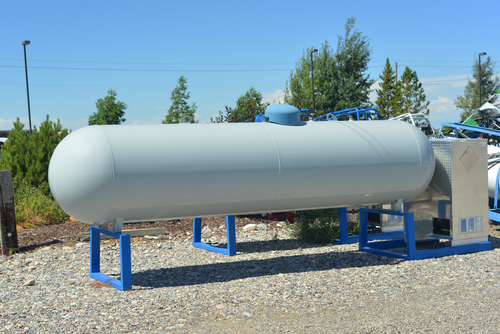RMP Applicability for Propane Storage Facilities
 |
As early as November 2013, seven states had already declared states of emergency to allow for delivery of more propane, and that was a month before a massive ice storm struck, affecting power for more than 1.5 million people. By the time winter was over, the National Oceanic and Atmospheric Administration (NOAA) tallied record low temperatures (January through April) in dozens of cities from Oklahoma to Maine to Florida. For people who depended on propane for heat, the frigid weather was further compounded by a shortage of propane that prompted many state officials to call for expedited propane shipments.
While we have yet to find out what winter will bring this year, propane suppliers are preparing for the worst. According to the U.S. Energy Information Administration (EIA), “U.S. propane stocks increased by 1.4 million barrels last week to 77.4 million barrels as of September 12, 2014, 13.0 million barrels (20.2%) higher than a year ago.” Whether facilities are storing this propane in new tanks or in existing tanks, RMP requirements should be reviewed to ensure ongoing compliance.
The RMP regulation is defined at 40 CFR part 68 and is intended to prevent accidental releases that could impact the public or the environment. Facilities storing more than 10,000 pounds (lb) of propane in single vessels or groups of vessels that are connected or stored together are covered by the rule unless:
1. The propane is stored for use at the facility; or
2. The propane is held for sale and the facility is a retail facility where more than half of its income is obtained through direct sales to end users, or more than half of the fuel sold, by volume, is sold through a cylinder exchange program.
Management of Change for Aboveground Storage Tanks webinar on Wednesday, October 29. Learn how to stay compliant and even more importantly, help minimize the risk of a minor or potentially catastrophe incident. Learn more!
Determining tank capacity is also key to assessing RMP applicability, and the U.S. Environmental Protection Agency (EPA) notes it is usually given as water capacity, which should be provided on the tank nameplate. Assuming tanks are filled to 88 percent of capacity (the maximum level allowed under the National Fire Protection Association’s (NFPA) standard 58 at 60° Fahrenheit (F)), the following table can be used to determine capacity.*
|
Capacity in Gallons |
Capacity in Pounds |
|
| Storage Tank |
12,000 |
44,400 |
| Storage Tank |
18,000 |
66,500 |
| Storage Tank |
30,000 |
111,000 |
| Storage Tank |
40,000 |
148,000 |
| Storage Tank |
60,000 |
222,000 |
| Storage Tank |
100,000 |
370,000 |
| Storage Tank |
120,000 |
444,000 |
| Transport (Cargo Tank) |
8,000–11,000 |
30,000–41,000 |
| Rail Car DOT Class 105J300W & 105A300W |
11,000–34,500 |
41,000–128,000 |
| Rail Car DOT Class 112J340W & 112T340W 114J340W & 114T340W 114J400W & 114T400W |
26,000–34,500 |
96,000–128,000 |
| Bobtails (Delivery Cargo Tank) |
750–3200 |
2,800–12,000 |
* If tanks are always filled to a lower level, adjust the numbers to reflect the lower inventory. For larger tanks, multiply the water capacity by 3.696 to determine lb at 88 percent capacity.
Management of Change for Aboveground Storage Tanks: Strategies for Ensuring Tank Integrity and Compliance
Join us on October 29 when our presenter will provide a clear and detailed understanding of what’s involved with ensuring AST integrity and proven strategies for the successful completion of the process. Register now.
Another important determining factor is whether or not multiple tanks are connected or in close proximity to each other. For example, a facility with four 750-gallon (gal) tanks connected by piping or placed close together would be covered if they could be involved in a single accident, such as fire or explosion that spreads to or impacts all of the tanks. In this case, the tanks are considered one “process,” and all of the propane must be counted toward the 10,000-lb threshold.
If tanks are not connected, but are located near each other, the EPA provides the following estimated separation distances for considering each as a separate process.*
|
Tank Capacity (gal) |
Tank Confinement |
Estimated Separation Distance (feet) |
|
500 |
Partial–High |
61 |
|
500 |
Low |
41 |
|
1000 |
Partial–High |
76 |
|
1000 |
Low |
51 |
|
2000 |
Partial–High |
96 |
* This is one way to determine whether tanks are close enough together for a vapor cloud explosion resulting from the release of the total contents of one tank to cause the catastrophic failure of an adjacent tank. The EPA notes that the distances in the table are not intended as worst-case endpoint distances. Owners and operators should refer to the RMP Guidance at http://www2.epa.gov/rmp/rmp-guidance-propane-storage-facilities-main-text for additional information.
